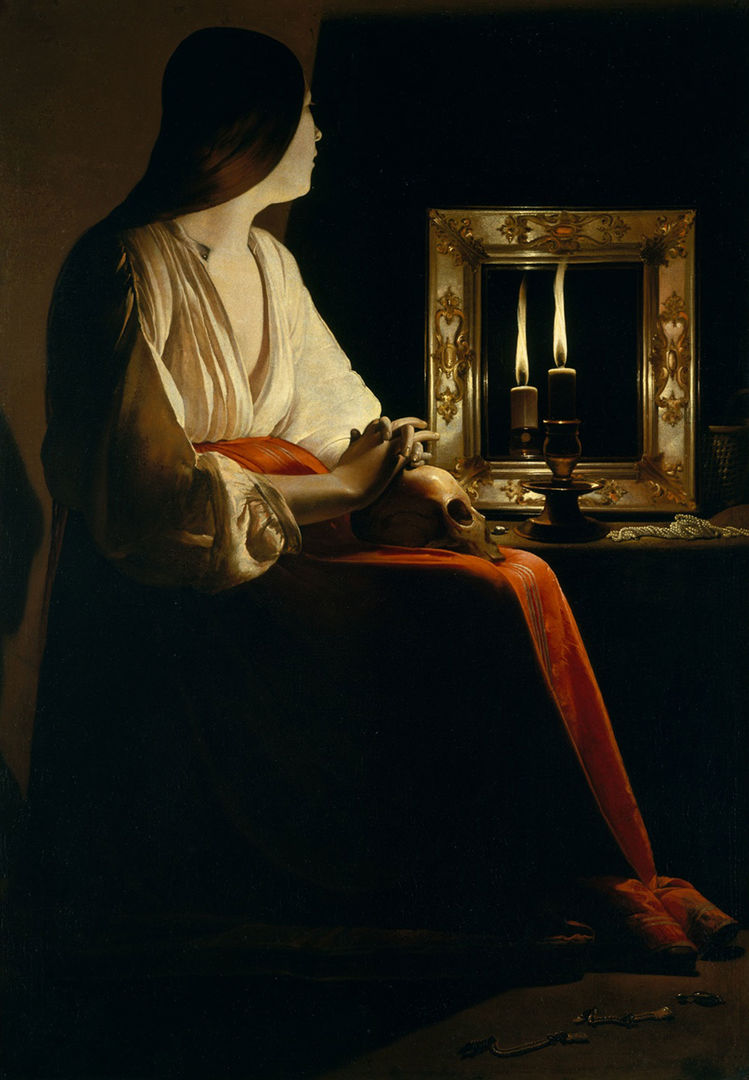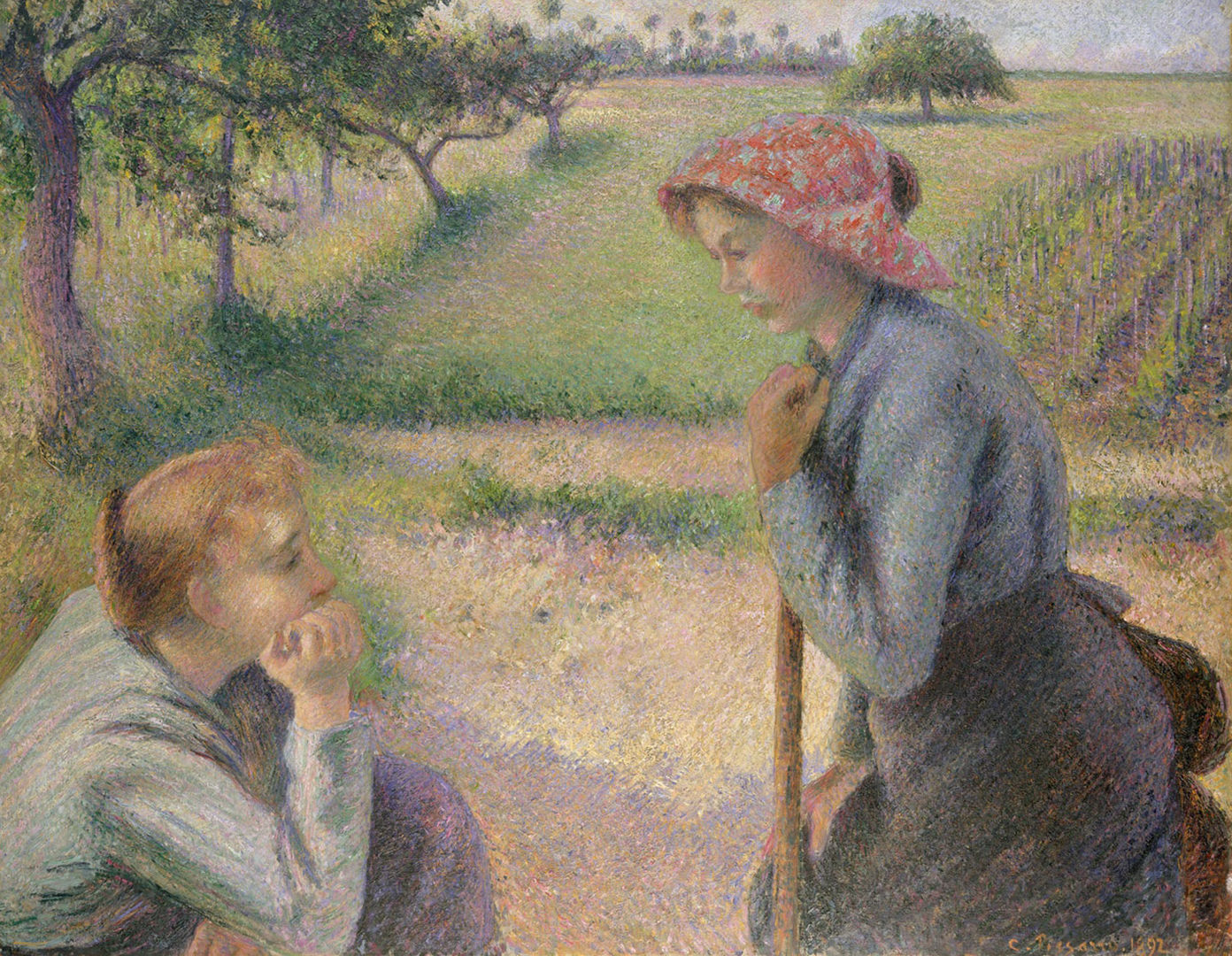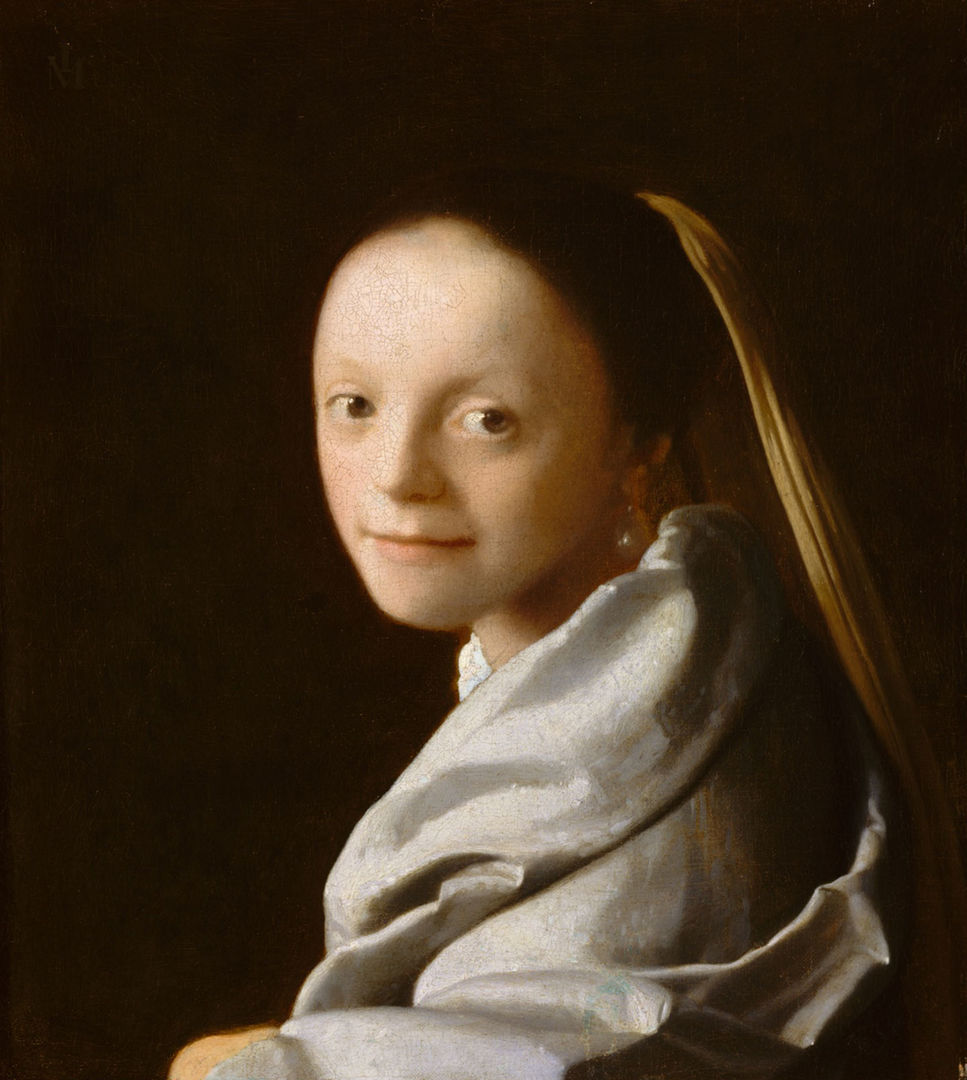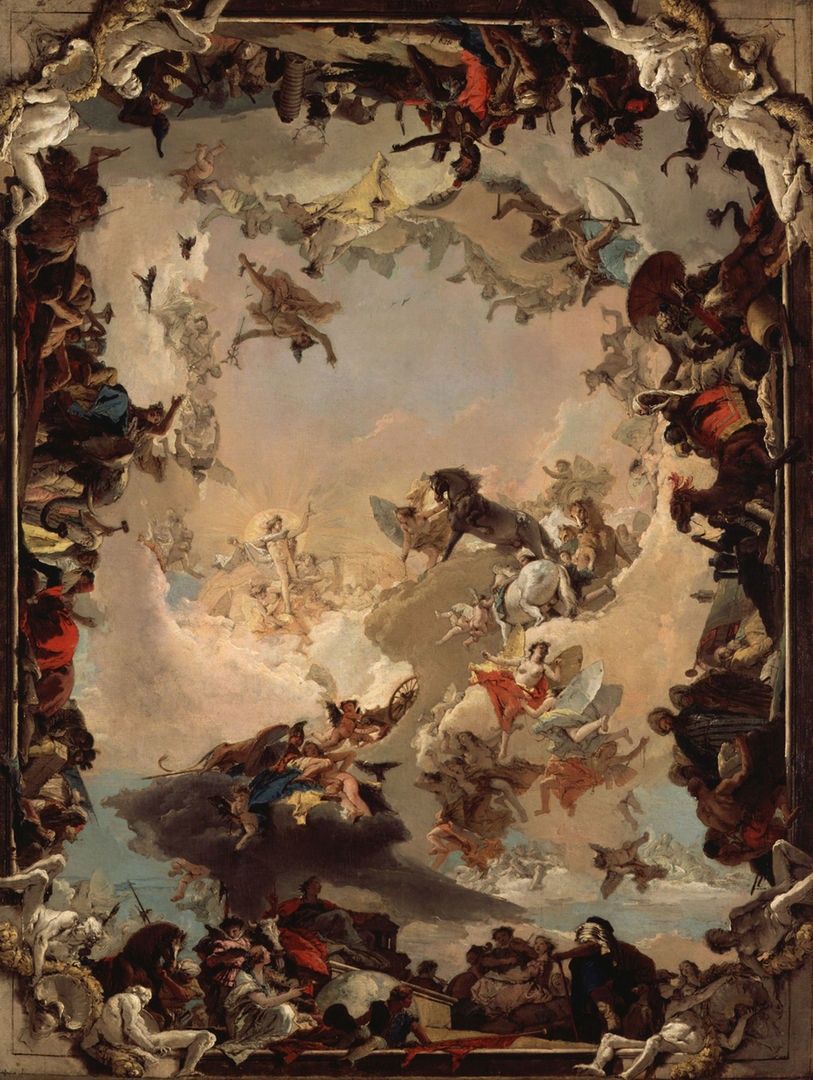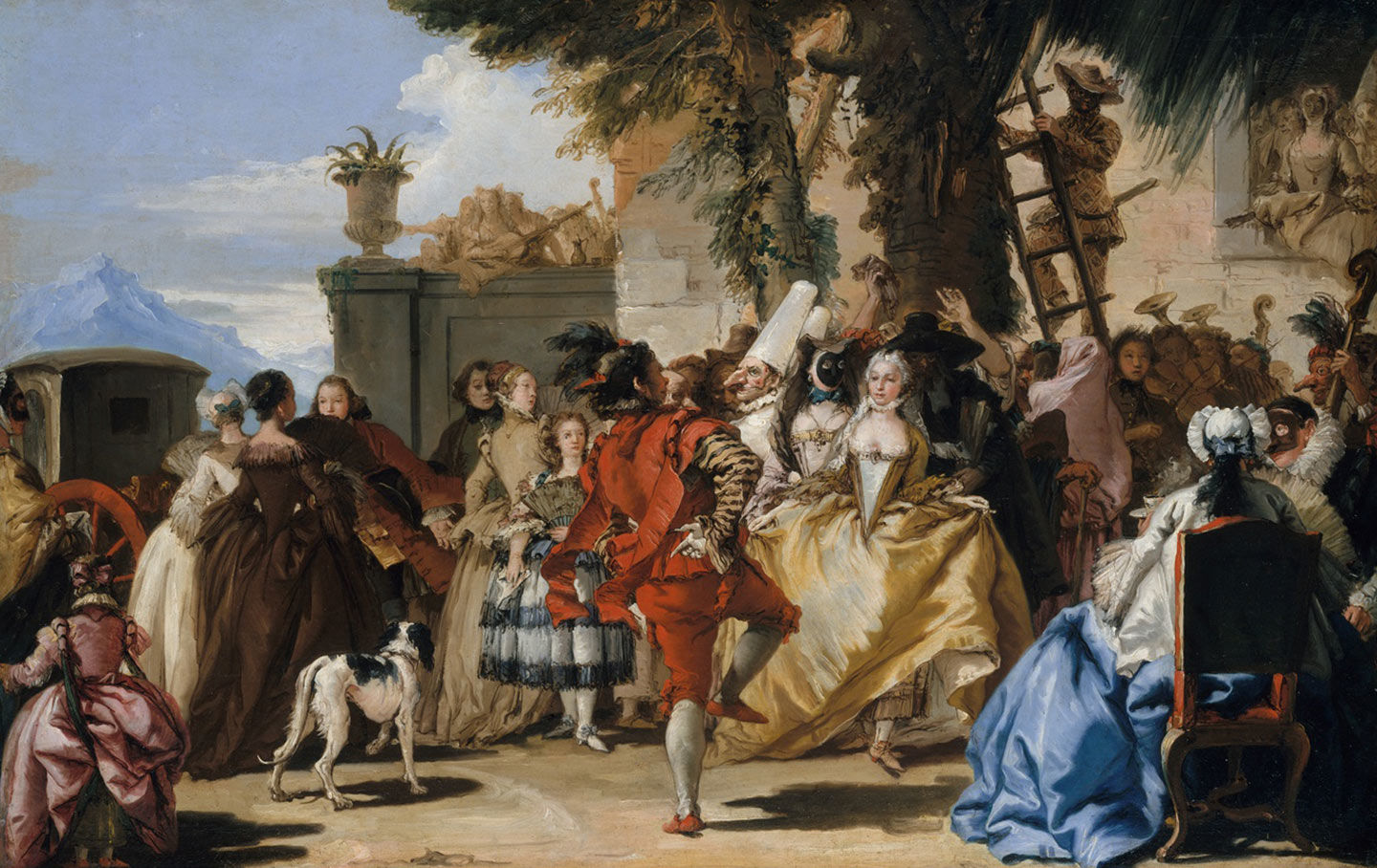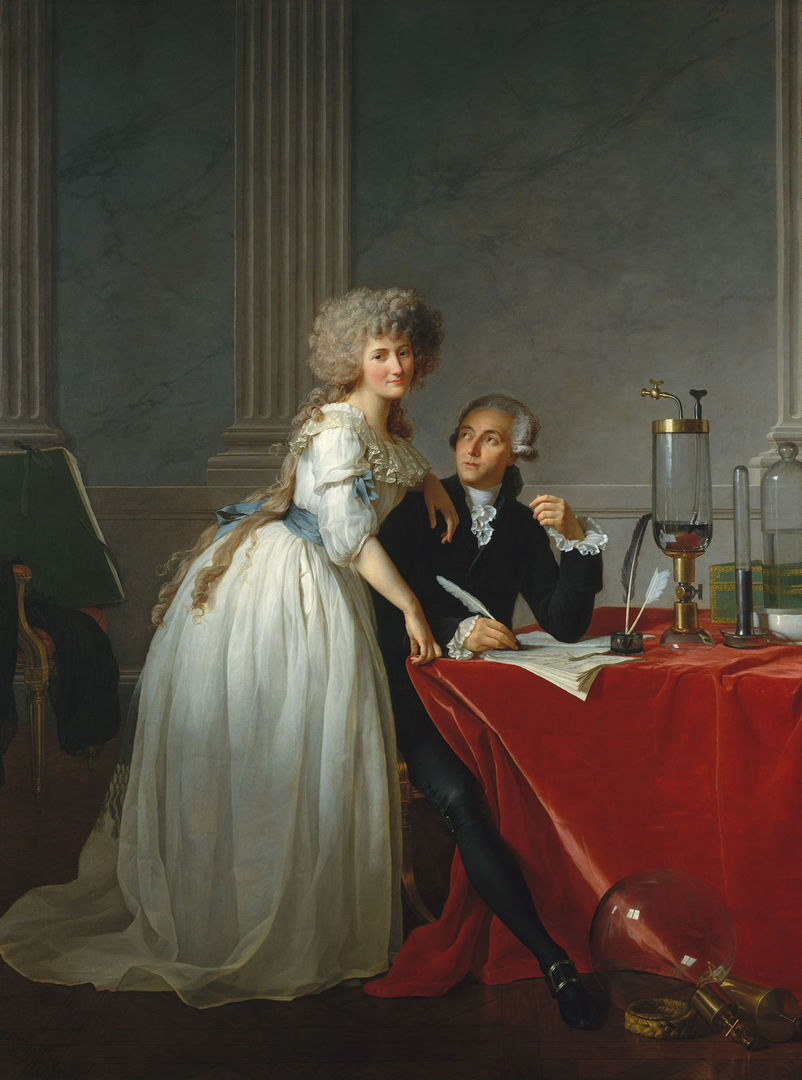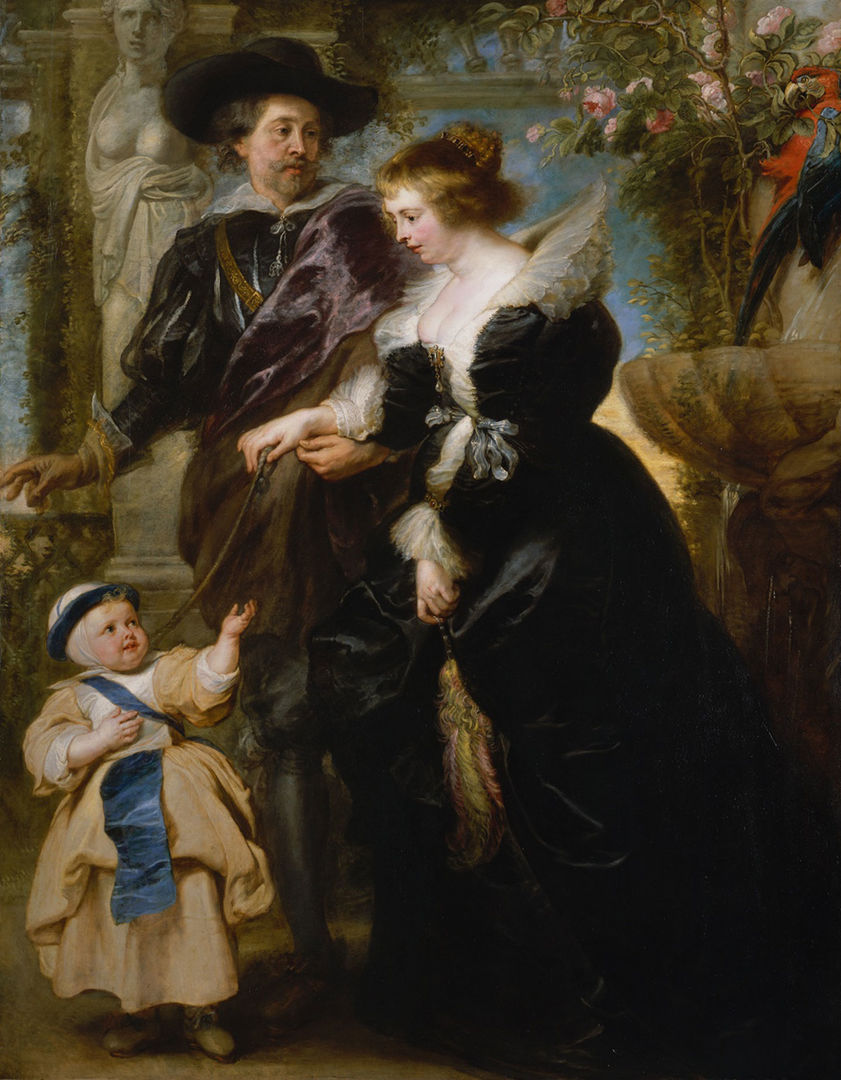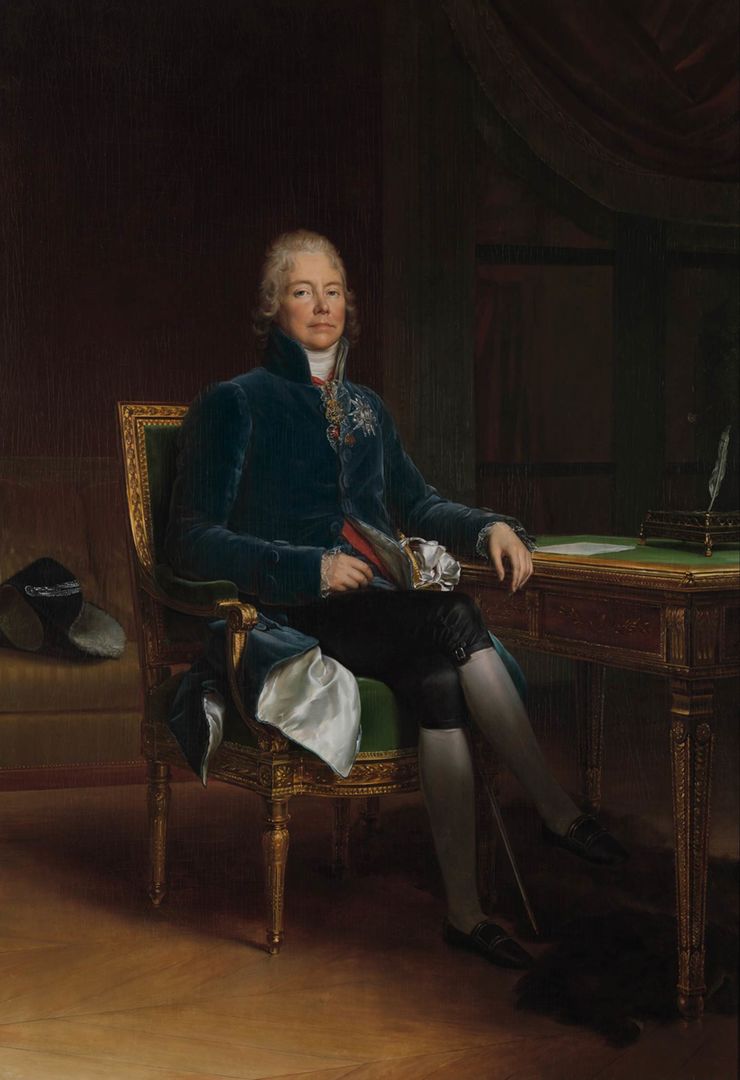Charles and Jayne Wrightsman—Sublime Collectors: A Short History
Katharine Baetjer, Curator Emerita, Department of European Paintings
By Charles Wrightsman's account, he first came to the Metropolitan Museum in 1949 to see the special exhibition Masterpieces of European Porcelain, where he noticed loans from the collection of Judge Irwin Untermeyer, including an array of brilliantly colored birds from the Meissen porcelain manufactory. He sought an introduction to the judge, whom he and Jayne entertained in Palm Beach. Before long, they acquired for themselves a number of Meissen birds, later funding for the Museum the purchase of two splendid Meissen lions by Johann Gottlieb Kirchner. Although their Palm Beach house had been completely furnished by Mona Williams with fashionable English antiques, which Untermeyer collected as well, their own taste was for French furniture: the prices were favorable and the possibilities for buying major works substantial. When they decided that the French pieces they had been able to buy were of much higher quality than the English, all of the English furniture went out the door.
In 1954 the Metropolitan Museum reinstalled the collection of European old master and nineteenth-century paintings at the top of the Great Hall staircase. Theodore Rousseau Jr., the sophisticated, multilingual curator who supervised the project, met Jayne Wrightsman for the first time on May 5 to give her a private tour. This was the beginning of a relationship of sixty years between the Wrightsmans and the trustees, directors, curators, and conservators of the Museum.
Charles Wrightsman joined the Museum's Board of Trustees in 1956, the Acquisition Committee in 1957, and the Executive Committee in 1964: he was a member of the visiting committees in the departments of Conservation and of European Sculpture and Decorative Arts. He was also a trustee of New York University, and from 1970 to 1973, chairman of the board of the university's Institute of Fine Arts. He retired from his positions at the Metropolitan in 1975 but continued to support its activities and make formidable gifts. Following his death in 1986, the former director Thomas Hoving characterized him as "one of the most significant—and difficult—trustees in the history of The Metropolitan Museum of Art," going on to remark that, "in his quiet, devious way, he did more to upgrade the Met…than perhaps anyone else."
Jayne Wrightsman succeeded her husband on the Board and the most important committees of the Museum. In 1985 she became the chairman of the Acquisition Committee, working tirelessly until her retirement in 1997; she served on the visiting committees in the departments of European Paintings, Paintings Conservation, and European Sculpture and Decorative Arts. She was also a fervent patron of the National Gallery, London, and a passionate supporter of the State Hermitage Museum, Saint Petersburg.
Georges de La Tour (French, 1593–1653). The Penitent Magdalen, ca. 1640. Oil on canvas, 52 1/2 x 40 1/4 in. (133.4 x 102.2 cm). The Metropolitan Museum of Art, New York, Gift of Mr. and Mrs. Charles Wrightsman, 1978 (1978.517)
Charles B. Wrightsman, born in 1895, in Pawnee, Oklahoma, studied at Phillips Exeter Academy and Stanford and Columbia Universities. During World War I he served as a pilot in the Naval Reserve. He went into the oil business at twenty-three, developing properties in California, Kansas, Louisiana, Oklahoma, and Texas. In 1932 he was elected president of the Standard Oil Company of Kansas, which he restructured, thereafter producing Texas oil exclusively. His marriage to Irene Stafford, the mother of his two daughters, ended in a divorce in 1938. Seeking new interests, he became a tournament polo player and raised championship polo ponies. In the early 1940s he settled in Palm Beach, living at the Everglades Club.
Charles often visited southern California and it was there that he met Jayne Larkin. Born in Flint, Michigan, in 1919, Jayne grew up in Los Angeles and graduated from Los Angeles High School. They married in 1944 and in 1947 purchased the fabled house of Harrison and Mona Williams—"Blythedunes"—designed by Maurice Fatio. They acquired what was to be their permanent residence at 820 Fifth Avenue in 1955—two years after Charles liquidated the oil company (whose assets he largely owned). Later they kept a flat in London in St. James's. With the assistance of the legendary decorators Stéphane Boudin of Jansen and Henri Samuel, the Wrightsmans' residences were transformed. The Palm Beach house was featured in House and Garden prior to its sale in 1984, while the rooms of 820 Fifth Avenue have appeared in numerous publications. Not surprisingly, Jayne was later a key member of Jacqueline Kennedy's committee for the redecoration of the White House (Joseph Kennedy was a neighbor in Palm Beach and Jackie and Jayne became friends). The Wrightsmans expanded their knowledge with visits to collections abroad. Schedules were rigorously enforced, and leading experts on hand for advice. Together and with friends they traveled by air and from various yachts, visiting Western Europe and its capitals and museums, the Mediterranean, what were then the eastern bloc countries, and Russia, in which Charles had long been interested.
Jayne was an avid student, making up for shortcomings in her early education. She learned French, made contacts with leading experts, and with great intensity studied works of art, as well as the related literature and the sale catalogues of all of the major auction houses, gaining an extensive knowledge of European painting and a unique expertise in French decorative arts that was recognized by scholars in the field. Among those whose opinions Charles and Jayne sought were John Walker, director of Washington's National Gallery of Art, and Pierre Verlet of the Musée du Louvre, a leading scholar in French furniture and author of Le mobilier royal français. Sir Francis Watson, director of London's Wallace Collection and Surveyor of the Queen's Works of Art, became an advisor and the principal author of the catalogue of their collection, published between 1966 and 1973. Everett Fahy, former chairman of the Department of European Paintings at the Metropolitan and a frequent traveling companion, wrote the paintings entries and at Jayne's request, edited the 2005 volume titled The Wrightsman Pictures.
Camille Pissarro (French, 1830–1903). Two Young Peasant Women, 1891–92. Oil on canvas, 35 1/4 x 45 7/8 in. (89.5 x 116.5 cm). The Metropolitan Museum of Art, New York, Gift of Mr. and Mrs. Charles Wrightsman, 1973 (1973.311.5)
The couple had acquired their first major painting in 1952: Camille Pissarro's Two Young Peasant Women. Charles Wrightsman did nothing casually. Jayne later described the picture as a gift from him. A large canvas with monumental figures, the Pissarro is a late work, signed and dated 1892. It came from Rosenberg & Stiebel, a firm with connections to the Rothschild family, and had been offered by the legendary salesman Saemy Rosenberg. The provenance—Maurice de Rothschild was the previous owner—would have carried weight. Impressionist and Post-Impressionist paintings were in vogue in New York at the time. Pissarro was the senior figure in the movement and had participated in all of the group exhibitions between 1874 and 1886. Charles would doubtless have been put off by the leftist leanings the picture is sometimes thought to exhibit, but that issue had not been raised in the critical literature at the time. The National Gallery of Art exhibited the Pissarro from 1955 to 1957 and afterward the painting went to Palm Beach, but it is not typical of what came to be known as the Wrightsman taste and they would own few works of the kind.
In 1955, Charles, encouraged by Ted Rousseau, purchased through the dealer Germain Seligmann the incomparably important Vermeer, Study of a Young Woman. Painted about 1665, it is one of only two head studies (tronies) by the artist. The painting had been brought to his attention by John Walker, after the trustees of the Samuel H. Kress Foundation declined to buy it. Charles required that the state of conservation be minutely examined. On this, as on all other occasions, he conducted the negotiations over the price himself. (He rarely raised his offer or changed his mind.) The Vermeer, a painting of haunting beauty, was lent to the Museum in 1955 and presented in 1979, making the Metropolitan's collection of five works by the artist the largest in the world.
Johannes Vermeer (Dutch, 1632–1675). Study of a Young Woman, ca. 1665–67. Oil on canvas, 17 1/2 x 15 3/4 in. (44.5 x 40 cm). The Metropolitan Museum of Art, New York, Gift of Mr. and Mrs. Charles Wrightsman, in memory of Theodore Rousseau Jr., 1979 (1979.396.1)
Charles also took a deep interest in the purchasing program of the Museum in the 1960s, consulting with Ted Rousseau and director James Rorimer by mail and telegram constantly during the months he was traveling in Europe. For the couple's personal collection, he bought in 1961 at Sotheby's a Goya portrait of the first Duke of Wellington that had been offered by the duke of Leeds. Subsequent to a public outcry, he stood aside to allow the National Gallery, London, to acquire it for the price he had paid. Charles attended the historic Erickson sale in 1961, and was seated beside Rorimer when the Metropolitan Museum paid a record sum for Rembrandt's Aristotle with a Bust of Homer. While he preferred to give or buy works of art for the Museum in their entirety, in this case, against his usual rule, he was one of several trustees who contributed. The purchase was front-page news in the Herald Tribune.
From the mid-1950s until about 1970, the Wrightsmans acquired two or three old master paintings every year. When they went abroad, they invariably lent several pictures to the summer loan shows, then a feature of the Museum's exhibition program. They preferred the eighteenth century and developed a taste for the Venetian School. The couple's first Giovanni Battista Tiepolo, bought in 1956, was the spectacular Allegory of the Planets and Continents, a study for the artist's most important commission, the ceiling of the stair hall of the prince-bishop's palace—the Residenz—in Würzburg. The same year they acquired two tableaux de mode (scenes of aristocratic life) by Jean François de Troy, surely a step toward bringing the artist back into fashion. De Troy then was rather little noticed, while his depictions of elegant company now fetch high prices at auction. Four more Giovanni Battista Tiepolos followed. The Wrightsman ceiling sketch for the Royal Palace in Madrid joined an alternative study for the same ceiling bought in 1937, while their allegorical figure en camaïeu, presented in 1984, gained a companion piece, bequeathed in 1996 by Lore Heinemann. Jayne loved Giambattista Tiepolo and retained for the Fifth Avenue apartment their earliest work by the artist, a study for a canvas in the Arkhangelskoye palace near Moscow, showing the meeting of Antony and Cleopatra, and the latest, The Flight into Egypt.
Giovanni Battista Tiepolo (Italian, 1696–1770). Allegory of the Planets and Continents, 1752. Oil on canvas, 73 x 54 7/8 in. (185.4 x 139.4 cm). The Metropolitan Museum of Art, New York, Gift of Mr. and Mrs. Charles Wrightsman, 1977 (1977.1.3)
The Wrightsmans also purchased works that from the outset were intended for the Museum, as the subjects and size made them unsuited to practically any private space. Belonging to this category is a Baroque altarpiece by Guercino for which Ted Rousseau displayed enthusiasm and which Charles Wrightsman bought in 1957, and another altarpiece, of the Annunication, by Luca Giordano, acquired the following year. The Guercino, at more than eleven feet in height, has an obscure religious subject, The Vocation of Saint Aloysius (Luigi) Gonzaga. Later it was joined by what remains the greatest Italian Baroque picture in the collection, Guercino's Samson Captured by the Philistines. Other works acquired during these years that were always meant for the permanent installation are the Paris Bordon, Portrait of a Man in Armor with Two Pages, and a Largillierre portrait that is exhibited in the Wrightsman Galleries.
The Wrightsmans' Venetian holdings contributed a playful note. They bought works by Giovanni Domenico Tiepolo, son of Giovanni Battista: A Dance in the Country, painted in Franconia before 1753, and The Departure of the Gondola, from the mid-1760s. Paintings by Canaletto soon followed: in 1964, a Grand Canal scene and an interior view, Campo Santa Maria Zobenigo, and in 1965, two more from the same set, dating from the mid-1730s. Jayne was particularly attached to the Canalettos. Francesco Guardi came much later, perhaps because an unusual Guardi is difficult to find, but Villa Loredan, Paese, bought in 1968, was worth waiting for. Jayne remembered admiring related views in the 1965 Guardi exhibition in Venice. The landscape with a country house was joined in 1984 by a luminous seascape, The Island of San Michele.
Giovanni Domenico Tiepolo (Italian, 1727–1804). A Dance in the Country, ca. 1755. Oil on canvas, 29 3/4 x 47 1/4 in. (75.6 x 120 cm). The Metropolitan Museum of Art, New York, Gift of Mr. and Mrs. Charles Wrightsman, 1980 (1980.67)
Conforming to the highest standards of quality, rarity, and outstanding importance are works bought in the 1960s: El Greco's Christ Healing the Blind, The Penitent Magdalen by Georges de La Tour, and Gerard David's Virgin and Child with Four Angels. The first came from the dealer Agnew; it was painted by El Greco shortly after he left Venice, which explains its Veronese-like color. The La Tour, offered by the Paris gallery Heim, is an example of the work of an artist whose oeuvre was still being rediscovered. The David, the only Netherlandish picture they ever owned, was brought to their hotel in Madrid by a stranger introduced to them by Harry Brooks of Knoedler's. With the diminutive angels suspending a crown over the Virgin's head, it is one of the artist's most enchanting pictures. In 1966, the Wrightsmans secured their first Rubens, and in 1968, Poussin's The Companions of Rinaldo, a painting commissioned by his great Roman patron, Cassiano dal Pozzo. The year 1969 saw the acquisition of the exquisite portrait of Henrietta Maria, consort of Charles I of England, painted by Anthony van Dyck. This, too, Jayne retained for the sitting room on Fifth Avenue.
Shortly after he was appointed director, Thomas Hoving was urged by Charles Wrightsman to visit the Gold Room at the State Hermitage Museum in Leningrad. Hoving later negotiated the first in a series of historic exchanges between the Metropolitan Museum and the Ministry of Culture of the U.S.S.R., whereby the exhibition From the Lands of the Scythians came to New York in 1975. The show was underwritten in part by the Wrightsmans. More than two hundred objects, mostly in precious metals and of exquisite workmanship, made for the ancient nomadic peoples of the Eurasian steppes, left the Soviet Union for the first time.
Charles Wrightsman celebrated his seventy-fifth birthday in 1970, the year Everett Fahy took charge of the European Paintings department. Charles and Jayne—busy with the installation of the Museum's French period rooms, the first of which opened in 1969, and with the publication of their catalogue—acquired fewer old masters. At auction in London in 1970 they bought a landscape by Domenichino—a work on copper that had been painted for the Colonna family in Rome—as well as a small Seurat, and, in 1971, a portrait by Delacroix of his beloved aunt, Madame Henri François Riesener. In 1973, they presented the Pissarro and four old masters, the most important gift of European pictures in decades. The final rearrangement of The Wrightsman Galleries was completed in 1977, the year Sir John Pope-Hennessy, former director of the Victoria and Albert and British Museums, took over as chairman of the European Paintings department. Over the next few years the Wrightsmans gave ten important pictures, and Charles Wrightsman put up funds so that Jacques Louis David's double portrait of the tax farmer and scientist Antoine-Laurent Lavoisier and His Wife would not escape the Museum's grasp. The painting, acquired by John D. Rockefeller Jr. in the 1920s, had been given to the Rockefeller Institute in Manhattan, the medical research institution that bears his name, where it hung in the library. The windows of the room, which overlooked the East River, were opened to admit whatever breeze there might be during the summer months, as well as pigeons that perched on the gilded frame. By 1977 the picture had become an asset too valuable to retain, and Wrightsman, frustrated by Hoving's apparent inability to meet the price, bought it in with the proviso that it be installed in the Wrightsman Rooms. Hoving later claimed that he had "mousetrapped" Charles into buying the picture. When asked whether he knew this, the donor responded affirmatively, but that he hadn't minded: "'I needed it and the museum needed it,' he chortled."
Jacques Louis David (French, 1748–1825). Antoine-Laurent Lavoisier (1743–1794) and His Wife (Marie-Anne-Pierrette Paulze, 1758–1836), 1788. Oil on canvas, 102 1/4 x 76 5/8 in. (259.7 x 194.6 cm). The Metropolitan Museum of Art, New York, Purchase, Mr. and Mrs. Charles Wrightsman Gift, in honor of Everett Fahy, 1977 (1977.10)
Charles was equally decisive about the purchase of Rubens, His Wife Helena Fourment, and Their Son Frans, acquired when the J. Paul Getty Museum hesitated, owing to a misunderstanding of the condition. The big panel was shipped to Palm Beach and stood for a time on an easel in the drawing room before being sent to the Metropolitan, where it has been ever since. This famous picture had been owned by the dukes of Marlborough at Blenheim Palace as well as by Baron Alphonse de Rothschild in Paris.
Peter Paul Rubens (Flemish, 1577–1640). Rubens, His Wife Helena Fourment (1614–1673), and Their Son Frans (1633–1678), ca. 1635. Oil on wood, 80 1/4 x 62 1/4 in. (203.8 x 158.1 cm). The Metropolitan Museum of Art, New York, Gift of Mr. and Mrs. Charles Wrightsman, in honor of Sir John Pope-Hennessy, 1981 (1981.238)
Sir John Pope-Hennessy interested the Wrightsmans in a fine Michiel Sweerts, Clothing the Naked—from the prestigious collection of Graf von Schönborn, Schloss Weissenstein, near Pommersfelden. Another work he persuaded them to buy was Samson Captured by the Philistines by Guercino, the keystone of an expanding Italian Baroque collection. Rediscovered in 1979 by the Guercino specialist, Sir Denis Mahon, this enormous painting came from a palace in war-torn Beirut, Lebanon. Always punctilious and informed about conservation issues, Wrightsman engaged the premier restorers of the time: Mario Modestini, a private conservator, and at the Museum, Hubert von Sonnenburg, and John Brealey, who treated the Guercino and through his seminars transformed conservation practice in many American museums.
Once or twice Mr. and Mrs. Wrightsman joined with others to contribute to purchases Sir John recommended, notably, Saint John on Patmos by Hans Baldung. Their high regard for him is reflected by the fact that after his death Jayne, together with other trustees, purchased Scheggia's Triumph of Fame, the birth tray of Lorenzo de' Medici that had belonged to the New-York Historical Society, in Pope-Hennessy's memory. She also drew attention to the museum profession in a way that is unique, making some of their most important gifts in honor of the curators who helped them to form their collection: Theodore Rousseau, Sir John Pope-Hennessy, and Everett Fahy.
After her husband's death in 1986, Jayne continued to acquire pictures for the permanent collection: among them Venus and Cupid by Lorenzo Lotto, Canaletto's Piazza San Marco, and Philippe de Champaigne's Annunciation from Anne of Austria's private oratory in the Palais Royal, Paris. These were not bought directly, but selected with members of the staff, submitted to the Museum's Acquisition Committee, and paid for with her contributions. It has been possible to buy with the Wrightsman Fund works such as Carle Vanloo's The Hunt Breakfast, Marcantonio Franceschini's The Last Communion of Saint Mary of Egypt, Goffredo Wals's A Roman Landscape with Figures, Sebastian Stoskopff's Still Life with a Nautilus, Panther Shell, and Chip-Wood Box, Jean-Baptiste Perronneau's portrait of Olivier Journu, and Pierre Hubert Subleyras's The Mass of Saint Basil, among others. Contributing to the attempt to broaden the scope of the collection, the fund also underwrote Caspar David Friedrich's Two Men Contemplating the Moon. However, Jayne's first love was French art, and this explains her support for the purchase of Delacroix's Ovid among the Scythians.
In the 1980s Jayne refurbished the Fifth Avenue apartment, acquiring small, whole-length figure paintings, mostly from the nineteenth century: Chassériau's Young Arab, in 1981; a wonderful portrait by Gérome and a Kobell in 1982; a Géricault, Horsewoman, in 1983. She bought several Tissots. Her interest in Chasseriau's paintings may have led her to his drawings, of which she owned beautiful examples, and she collected fine portrait drawings by Ingres, a number of which she gave in honor of Philippe de Montebello (see example).
June 2013 brought the opening of the European old master paintings collection in expanded galleries at the top of the Great Hall staircase. Led by Keith Christiansen, the curators planned the new display and Jayne closely monitored our progress. She presented a work by Louis Léopold Boilly that shows the public at the Louvre in 1808, viewing for the first time Jacques Louis David's immense painting of the coronation of Napoleon and Josephine. This remarkable work, with portraits of the artist's contemporaries, joined eight other pictures in a new gallery devoted to Neoclassical painting and named in her honor.
Baron François Gérard (French, 1770–1837). Charles Maurice de Talleyrand Périgord (1754–1838), Prince de Bénévent, 1808. Oil on canvas, 83 7/8 x 57 7/8 in. (213 x 147 cm). The Metropolitan Museum of Art, New York, Purchase, Mrs. Charles Wrightsman Gift, 2012 (2012.348)
Three of the paintings are from the Wrightsman Collection and three are Jayne's recent purchases for the Museum. Among the latter the standout must be François Gérard's magnificent portrait of Talleyrand, a private commission from the wily politician and former foreign minister of France. That this great work finds itself in the company of a portrait of his wife, also by Gérard and a second portrait of himself by Pierre Paul Prud'hon is nothing short of remarkable and signals the very special character of Jayne's contribution, to which in 2014 she added one of the most important acquisitions of recent decades: Charles Le Brun's Everhard Jabach and His Family, another landmark in the history of French art.
